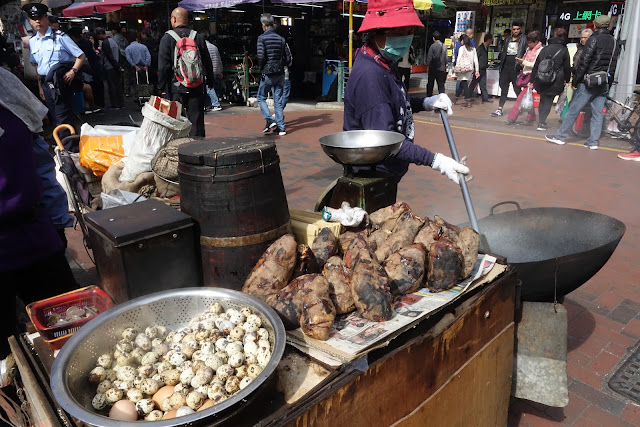Tai O. Hong Kong. Believe it of not, this is a village in Hong Kong in 2012.
This video was done at Tai O, village on the water, Lantau island, Hong Kong.
Here are my other videos about in Tai O:
Hong Kong. Street Food in Tai O. Gei Dan Chai, Egg Waffles
Street food in Tai O, Lantau, Hong Kong. Chinese Food
And here is another post about this village:
http://andreasettime.blogspot.com/2013/01/tai-o-lantau-hong-kong-small-village.html
Please see my collection of videos on my YouTube channel:
http://www.youtube.com/user/settime2588/videos
A few more photos of the village of Tai O
In Tai O they hang the fishes to dry together with the laundry !
The are no more salt worker here today, but extracting salt from the sea water was the biggest industry in town once upon a time.
No Rolls Royces here. People go around by bicycle.
Some details about the history of Tai O:
A few more photos of the village of Tai O
In Tai O they hang the fishes to dry together with the laundry !
No Rolls Royces here. People go around by bicycle.
Some details about the history of Tai O:
Nearby archaeological sites date back to
the Stone
Age, but permanent, and verifiable, human
settlement here is only three centuries old.
Stories that would be impossible to
substantiate have Tai O as the base of many smuggling and piracy operations,
the inlets of the river providing excellent protection from the weather and a
hiding place.
In early 16th century, Tai O was once
occupied shortly by Portuguese during Battle of Tãmão. At nearby Fan Lau, a
fort was built in 1729 to protect shipping on the Pearl River. Smuggling of guns, tobacco, drugs and people remains a documented
illegal activity both into and out of mainland
China.
When
the British came
to Hong Kong, Tai O was known as a Tanka village.
During and after theChinese Civil War, Tai O became a primary entrypoint for illegal immigration for
those escaping from the People's Republic of China. Some of these immigrants, mostly Han
Chinese, stayed in Tai O, and Tai O attracted
people from other Hong Kong ethnic groups, including Hoklo (Hokkien)
and Hakka.
Tai
O has a history of salt
production. In 1940, it was recorded that the Tai Po salt marshes were
covering 70 acres (280,000 m2) and that the production has
amounted to 25,000 piculs (1,512metric tons) in 1938.[1]











Comments
Post a Comment